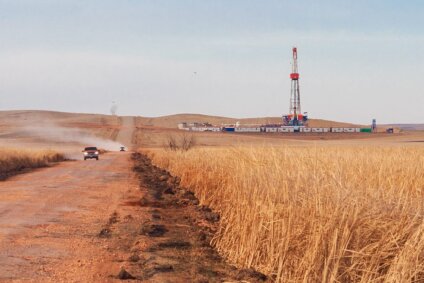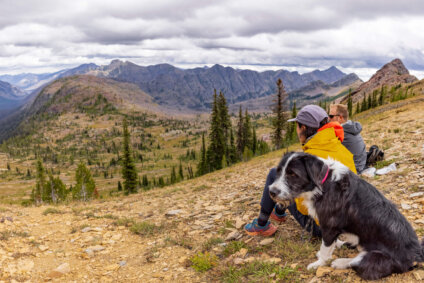The BLM doubles down on avoiding local input
New Pryor Mountains plan is more evidence of the agency’s top-down approach
Building on the disregard for the input of local field offices and the public that is fast becoming its trademark under this administration, the Department of the Interior’s Bureau of Land Management released an environmental assessment that provides for the widespread use of motorized electric bicycles (e-bikes) across the lower elevations of the Pryor Mountains (Baahpuuo Isawaxaawúua, Crow).
The assessment recognizes over 50 miles of historic routes as official trails, but at a steep price: all of those trails are classified as “exclusively non-motorized” trails that would also be open to mountain bikes, a category that now includes e-bikes.
Opening non-motorized trails to e-bikes will fundamentally diminish the wild experiences that hikers, hunters, horsemen, and others seek in the remote backcountry. Some models can travel up to 28 miles per hour, posing a safety threat to foot and stock users of “non-motorized” trails. E-bikes are heavier than traditional mountain bikes and will hasten erosion and trail degradation at a time when funding for trail maintenance is woefully inadequate. Because of their increased range, they can cause wildlife flight in increasingly remote areas.
There are areas in the Pryors that are suitable for traditional mountain bike, and even e-bike, use, but these should be determined by careful site-specific analyses that account for the needs of all users and the ecological integrity of the landscape. It’s critical that the BLM make trail-by-trail decisions, rather than simply opening all trails to motorized and mechanized use.
Submit a comment today making it clear to the BLM why the environmental assessment is woefully inadequate. A full environmental impact statement is necessary to make site-specific decisions about allowing motorized and mechanized use to improve user experience and protect the fragile ecosystem of the Pryors.
Submit a comment today
Despite the potentially profound effects e-bike use would have on the trail quality, wildlife habitat, and wild solitude of the Pryors, the BLM, under the guidance of the Department of the Interior, released the environmental assessment without providing a single opportunity for the public to weigh in on the issue of e-bikes. By so doing, the department is underlining its disdain for public input and doubling down on its propensity to decide the fate of our public lands via administrative fiat, rather than informed decisions made by on-the-ground personnel.
Indeed, the looming decision to allow e-bikes in the Pryors is a striking outcome of the kinds of shady top-down policies the department apparently concocts in swampy D.C. back rooms.
Back in August, Interior Secretary David Bernhardt unilaterally issued a sweeping secretarial order that gave e-bikes the same standing as traditional mountain bikes on all lands administered by the Department of the Interior – national parks, wildlife refuges, and all BLM lands.
His order required that all trails and routes on DOI lands open to mountain biking also allow e-bikes, which are essentially motorized vehicles. The order also took the authority out of the hands of knowledgeable local BLM personnel, who should be the people making decisions about when and where mechanized and motorized vehicles of all types should be allowed on the landscapes they manage.
Furthermore, the secretarial order eliminates any chance of a nuanced discussion about how we manage mountain bikes on vast swaths of public land. It turns any mountain bike trail into a de facto motorized trail, precluding any thoughtful plan that could provide for foot, stock, and mountain bike use while reducing user conflict and ensuring ecological integrity.
And, of course, the public has been cut out of the process from start to finish. There was no opportunity for the public to review and comment on the initial secretarial order allowing e-bikes on DOI lands; there was no opportunity for local user groups to lay out their concerns and provide input about how to safely and sustainably manage user conflict; and because the order mandated a blanket opening of DOI lands to e-bikes, there was no chance for local BLM staff to analyze the potential impacts e-bikes would have on important ecological and cultural sites in the Pryors before deciding whether to allow them.
The public has never had the chance to discuss e-bikes on DOI public lands in a meaningful, transparent way, and that seems to be just the way Secretary Bernhardt likes it.
This is yet another example of this administration’s drastic top-down approach to local land management. In the past six months, it has released resource management plans favoring industry above all else. It has begun moving BLM headquarters from Washington, D.C. to Grand Junction, Colorado in an attempt to displace staff and weaken the agency. And it has named William Perry Pendley as acting director of the BLM, even though Pendley is an outspoken advocate for selling off our public lands.
It’s an upsetting trend, and confirms the importance of speaking up to defend our public lands and hold the agencies responsible for them accountable.
From now until December 6, the BLM’s local field office will be accepting comments from the public about the environmental assessment, and I encourage you to submit a comment explaining why the BLM needs to make trail-by-trail decisions about how it manages mechanized and motorized use in the Pryors. If you would like some guidance when writing your comments, review our commenting guide.
Comment Now
All comments will go directly to our BLM agents in Billings, local experts who can make on-the-ground decisions about whether to allow bikes – a category that now includes motorized e-bikes – on sensitive trails.
For help writing your comments, refer to this comment guide. If you have questions, send me an email at abertram@wildmontana.org.
– Aubrey Bertram, eastern Montana field director

Stay Connected
"(Required)" indicates required fields


